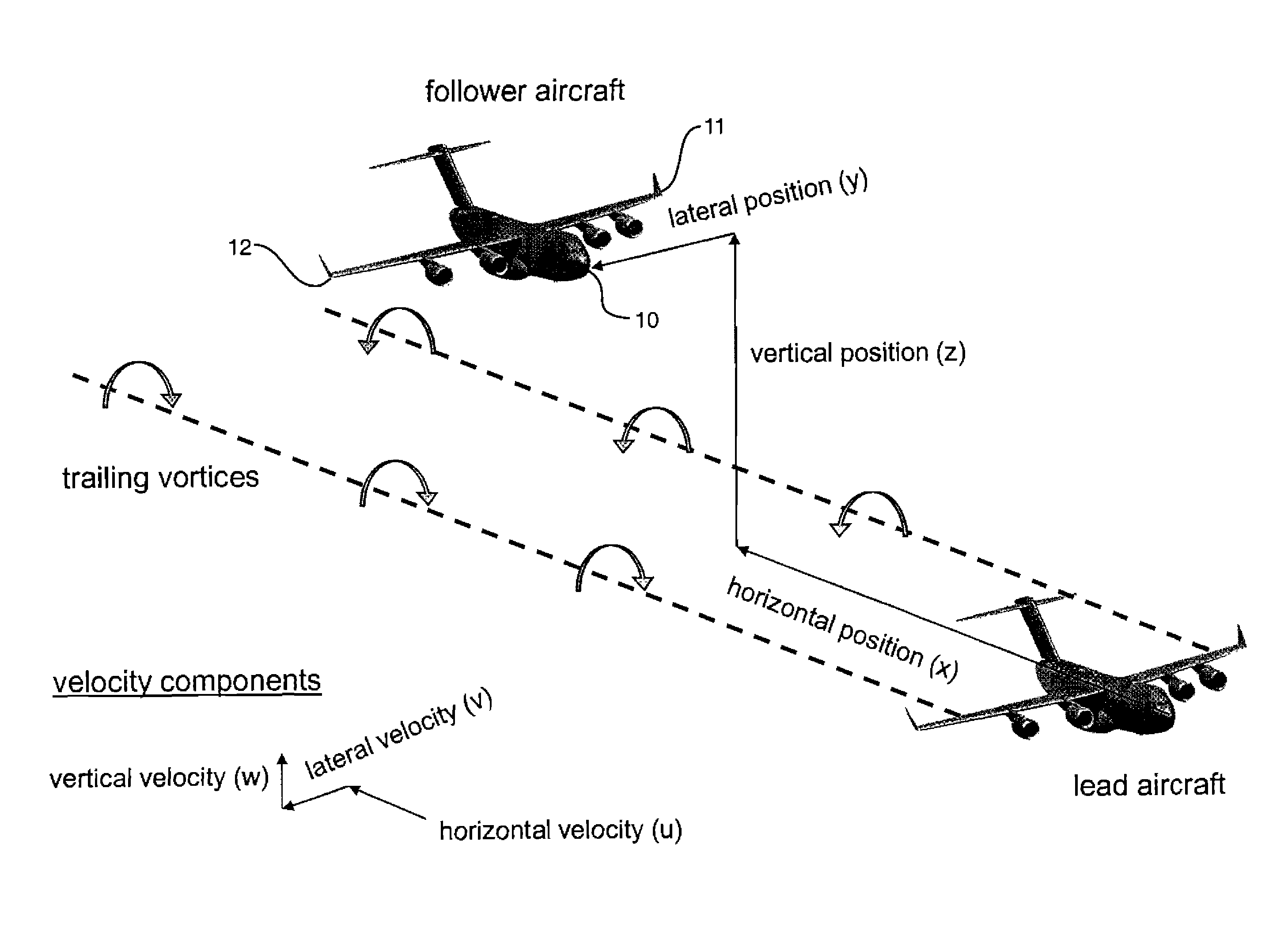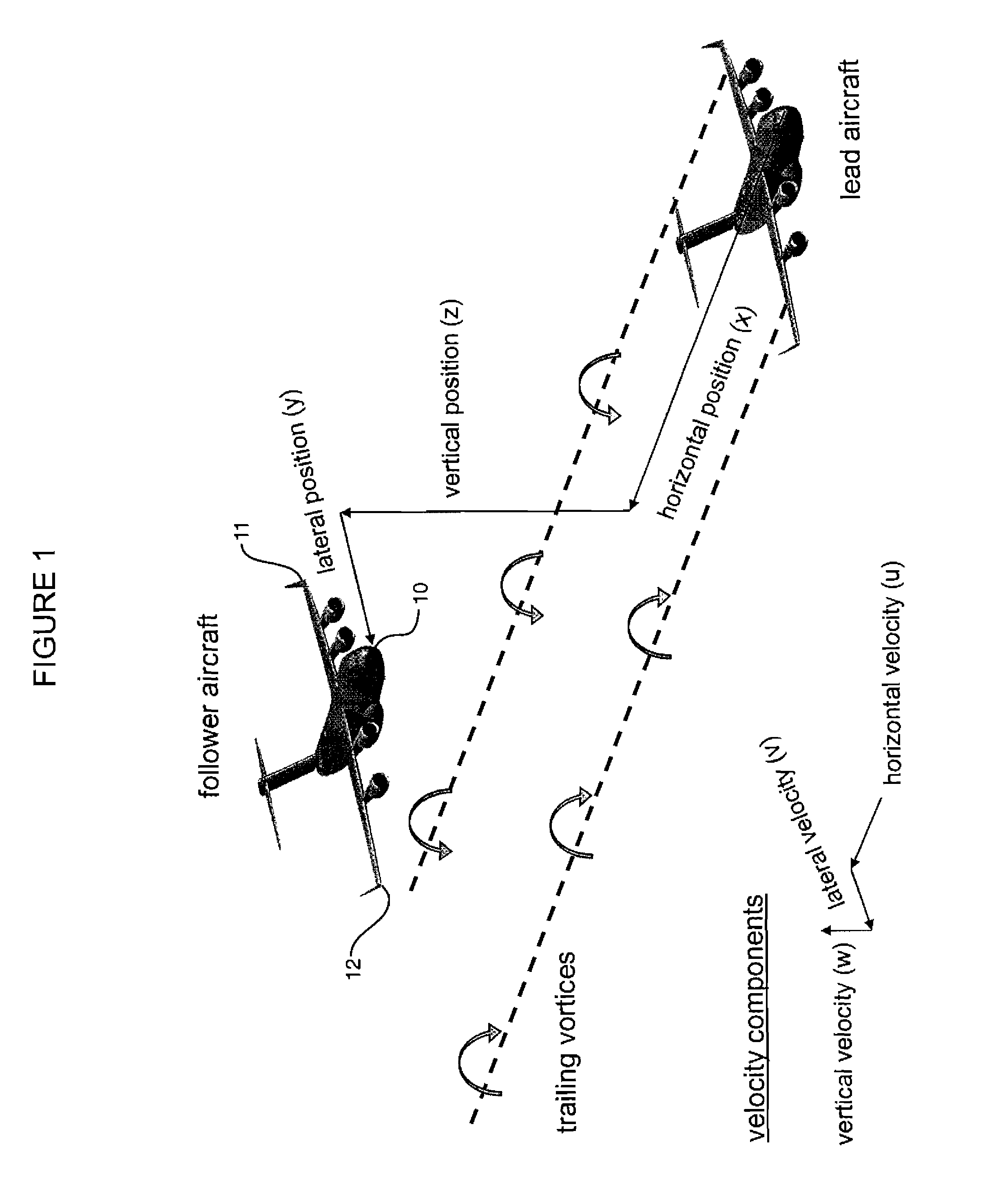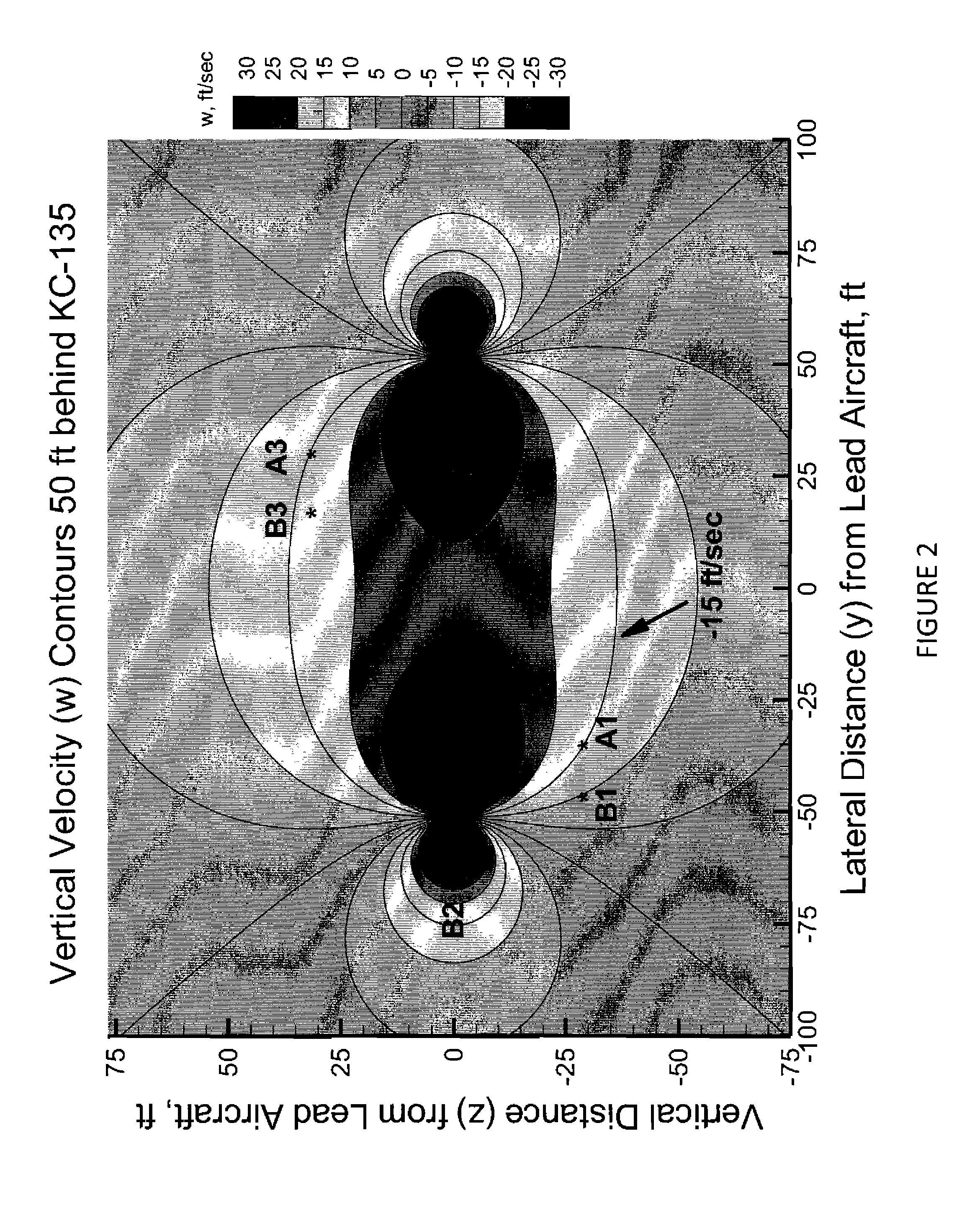Close formation flight positioning system using air data measurements
- Summary
- Abstract
- Description
- Claims
- Application Information
AI Technical Summary
Benefits of technology
Problems solved by technology
Method used
Image
Examples
Embodiment Construction
[0025]Lift on a wing is developed from the difference in air pressure on the upper and lower surfaces. The air pressure on the lower surface is higher than that on the upper surface, resulting in a lift force. At the wing tips, the flow curls around the tips, establishing a circulatory motion that trails downstream, resulting in a vortex whose axis is aligned with the flight path of the lead aircraft. A “horseshoe vortex” is a well established model for this trailing vortex structure. With the horseshoe vortex model, the wing itself is replaced by a bound vortex that is connected to each tip vortex thereby forming a horseshoe or U-shaped vortex. Near the center of these vortices, very high local velocities are present that decrease in air velocity magnitude as the radial distance from the center of the vortex increases. The magnitude of the velocities is proportional to the strength (Γ) of the vortex. The strength is directly proportional to the weight of the aircraft (W), divided b...
PUM
 Login to View More
Login to View More Abstract
Description
Claims
Application Information
 Login to View More
Login to View More - R&D
- Intellectual Property
- Life Sciences
- Materials
- Tech Scout
- Unparalleled Data Quality
- Higher Quality Content
- 60% Fewer Hallucinations
Browse by: Latest US Patents, China's latest patents, Technical Efficacy Thesaurus, Application Domain, Technology Topic, Popular Technical Reports.
© 2025 PatSnap. All rights reserved.Legal|Privacy policy|Modern Slavery Act Transparency Statement|Sitemap|About US| Contact US: help@patsnap.com



